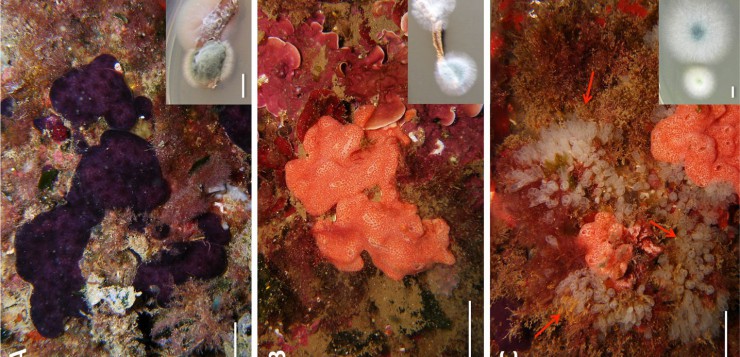López-Legentil, S., Erwin, Patrick M., Turon, Marta, Yarden, Oded. Symbiosis : DOI 10.1007/s13199-015-0339-x (2015) DIGITAL.CSIC
Ascidians are known to harbor diverse and hostspecific bacterial and archaeal communities in their tunic. However, to date, only one ascidian species has been investigated to assess symbiotic relationships with fungi and the extent of their diversity. In this study, we isolated and identified 37 strains of fungi in association with three common ascidian species in the NW Mediterranean Sea: Cystodytes dellechiajei, Didemnum fulgens, and Pycnoclavella communis, and 15 additional strains from concentrated seawater samples collected around the animals. Most of the isolated fungi were classified within four orders: Eurotiales (predominantly Penicillium spp.), Pleosporales, Hypocreales (predominantly Trichoderma spp.), and Capnodiales (Cladosporium spp.). Three additional fungal isolates from C. dellechiajei and D. fulgens belonged to the orders Helotiales, Phylachorales and Microascales, and matched to well-known plant and human pathogens (Botrytis cinerea, Plectosphaerella cucumerina and Scopulariopsis brevicaulis). Host-specificity of ascidian-associated fungi was not apparent and thus the significance of ascidian-fungal associations for ascidian wellbeing and their possible ecological roles remain unknown.


